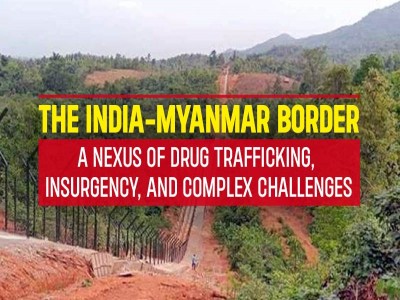
CABINET DECISIONS: ARUNACHAL PRADESH GETS TWO NEW DISTRICTS
2024 has seen a great start! Arunachal Pradesh is reaching an important turning point in its administrative decentralisation journey with the state cabinet's recent approval of the creation of two new districts, Keyi Panyor and Bichom. This decision, which aims to improve local administration and enable effective public service delivery, represents a significant change in the governing structure. The region is moving towards a more promising future. Understanding the socioeconomic dynamics and goals of the area is crucial as the state sets out on this revolutionary path.
Here's a brief overview of the two districts in the following:.
Keyi Panyor District:
Keyi Panyor, which originated from the Lower Subansiri district, has its administrative centre at Yachuli Circle, more precisely in the Ter Gapin-Sam Sath region. With administrative hubs established at Yachuli (ADC), Yazali, Paramputu (CO), Kora, Deed, and Pistana (CO), the transition strategically addresses regional needs and serves a population of 25,399 according to the 2011 census.
This decision to approve the creation of Keyi Panyor marks a big step towards spreading out administrative tasks. It shows the state's commitment to giving local communities more say in how things are run and making sure everyone has a fair chance to develop.
Bichom District:
East Kameng and West Kameng districts were divided to form the Bichom district, which has Napangphung as its administrative centre. Covering 2,897 square kilometres and home to 9,710 people, according to the 2011 census, Bichom seeks to promote accessibility and growth, especially in outlying areas. Communities like Sajolang, Puroik, and Aka will profit from this integration of 27 villages from West Kameng and 28 villages from East Kameng.
Administrative Commitment and Governance:
In order to ensure equitable development and governance, the cabinet's decision demonstrates a commitment to respect traditional borders and recognise the interests of participating communities. These projects, which improve public service delivery in rural areas and accelerate economic growth, are in line with larger initiatives like the Seva Aapke Dwar programme. Furthermore, the establishment of administrative positions in different categories for every district fortifies local governance frameworks and improves service delivery.
These choices are a prime example of responsive governance since they demonstrate initiatives to interact with regional stakeholders and attend to their issues, ultimately guiding the area towards more just and effective governance.
Infrastructure and Socio-Political Impact:
The government decided to maintain the Bana EAC headquarters in the East Kameng district and build a two-lane highway from NH 13 to the Richukrong CO headquarters, which will improve accessibility and connection. By building a new road, the government is making it easier for people to travel and making sure help can reach everyone, no matter where they are. These decisions address socio-political and infrastructure-related issues by creating posts and opportunities for the visionaries of the state.
Moreover, the authorization of supplementary positions within the fire and emergency departments highlights a dedication to strengthening public safety infrastructure throughout the entire state. Plus, more jobs in the fire and emergency departments mean more safety for everyone.
Final thoughts,
Arunachal Pradesh has taken a proactive approach to inclusive development and governance with the establishment of the districts of Keyi Panyor and Bichom. The administration is attempting to establish more equitable and effective governance through the division of labour and the creation of new regions. This action demonstrates the state's dedication to fostering individual growth and guaranteeing that everyone has a voice in decision-making.
Furthermore, the state wants to address long-standing problems among marginalised groups and promote socioeconomic improvement by creating new districts and effectively decentralising administrative operations. It's a significant step towards a brighter future for the entire community
Disclaimer: The opinions expressed in this article are those of the author's. They do not purport to reflect the opinions or views of The Critical Script or its editor.

Newsletter!!!
Subscribe to our weekly Newsletter and stay tuned.

















Related Comments